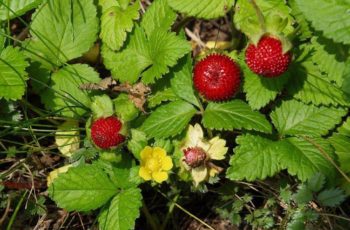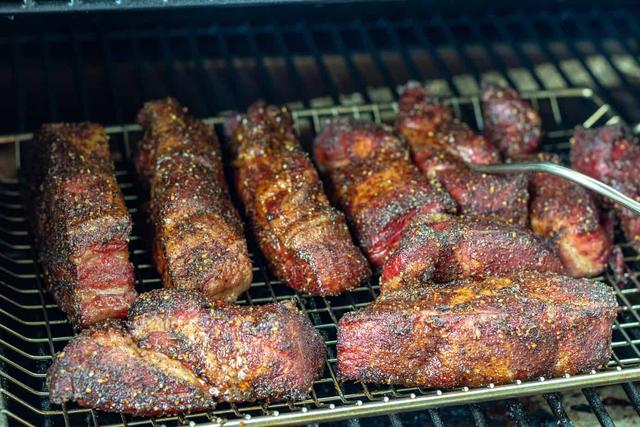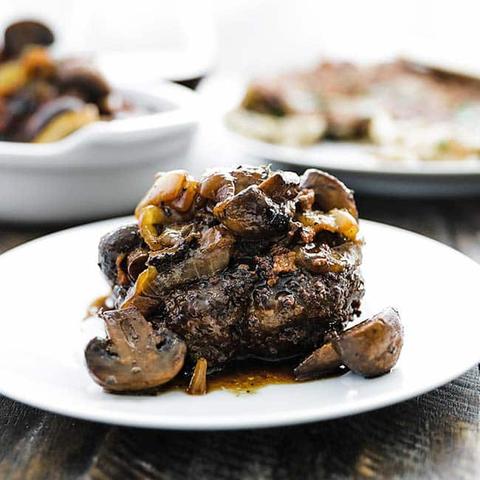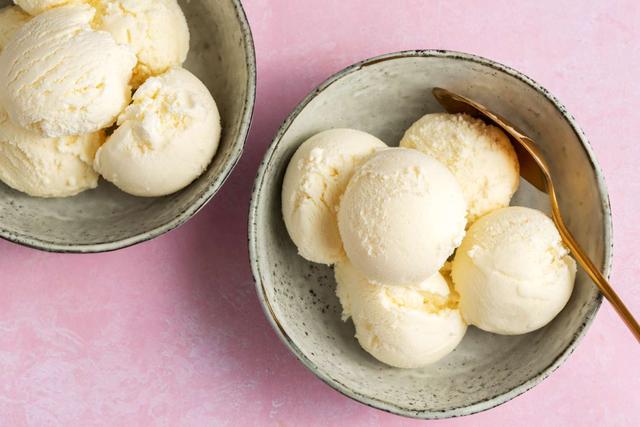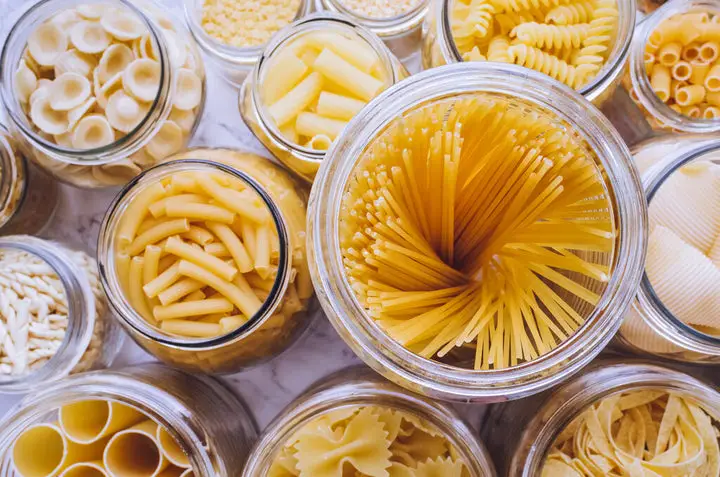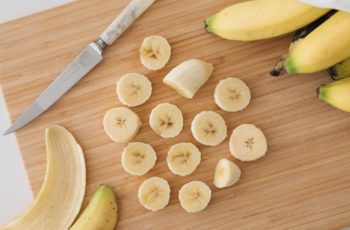
Bananas are one of the most popular fruits in the world. They are a good source of dietary potassium, vitamin C, dietary fiber, and vitamin B6. But do bananas have seeds? And if so, what kind of seeds do they have? In this blog post, we’ll answer these questions and more. So whether you’re just curious about bananas or are looking for some nutritional information, keep reading!

HOW DO YOU KNOW IF A BANANA HAS SEEDS?
One way to tell if a banana has seeds is to look at the outside of the fruit. If there are small black seeds visible, then the answer is yes, bananas have seeds. However, if there are no seeds visible, then the banana is seedless.
Another way to tell if a banana has seeds is to cut it open and take a look inside. If you see small black seeds, then the banana does have seeds. But if you don’t see any seeds at all, then the banana is seedless.
So now that you know how to tell if a banana has seeds, you might be wondering why some bananas have them and others don’t. Keep reading to find out!
WHAT ARE THE SEEDS IN A BANANA?
If a banana has seeds, they will be small and black. These seeds are not edible and should not be eaten. In fact, if you eat too many of them, they can actually be quite harmful.

WHAT ARE THE DIFFERENT TYPES OF BANANAS?
There are many different types of bananas, but the most common are Cavendish bananas. These are the type of bananas that you’re likely to find in the grocery store. Other types of bananas include plantains, red bananas, and ladyfinger bananas.
Cavendish bananas are the most popular type of banana. They are long and thin with yellow skin. The flesh is white or cream-colored and has a slightly sweet taste.
Plantains are a type of banana that is often used in cooking. They are shorter and thicker than Cavendish bananas and have green or yellow skin. The flesh is starchy and has a bland taste.
Red bananas are smaller and sweeter than Cavendish bananas. They have red or purple skin and the flesh is pink or red.
Ladyfinger bananas are small and slender with yellow skin. The flesh is sweet and delicate.
WHERE DO BANANAS COME FROM?
Bananas come from tropical countries like Ecuador, Colombia, Brazil, and India. They grow on a plant that is called a banana tree. Banana trees can grow up to 20 feet (6 meters) tall. The leaves of the banana tree are large and wide, and the flowers are yellow or white. Bananas take about 10 months to grow before they are ready to harvest.
Bananas are a popular fruit all over the world. They are used in many different dishes and can be eaten fresh, cooked, or baked. If you’re ever in a tropical country, be sure to try a banana! You might just find that it’s your new favorite fruit.
Why Commercial Bananas Don’t Have Seeds:
Commercial bananas generally won’t have any seeds because they have selectively chosen to be seedless through selective breeding.
How Are Commercial Bananas Grown?
There are various methods for plant propagation. In bananas, we use propagation through suckers, offshoots, or banana pups.
Nutritional benefits of bananas:
Bananas are a good source of dietary potassium, vitamin C, dietary fiber, and vitamin B6. They are also low in sodium and contain no fat. When eaten in moderation, bananas can be a healthy part of your diet.
Potassium: Bananas are a good source of dietary potassium. Potassium is an important mineral that helps to keep your blood pressure under control.
Vitamin C: Bananas are a good source of vitamin C. Vitamin C is an important nutrient that helps to boost your immune system and protect your body against infection.
Dietary fiber: Bananas are a good source of dietary fiber. Fiber is an important nutrient that helps to keep you regular and aids in digestion.
Vitamin B6: Bananas are a good source of vitamin B6. Vitamin B6 is an important nutrient that helps to convert food into energy and maintain a healthy nervous system.
Sodium: Bananas are low in sodium. Sodium is an important mineral that helps to regulate blood pressure. Too much sodium can lead to high blood pressure.
Fat: Bananas contain no fat. Fat is an important nutrient that helps to keep you full and provides your body with energy. However, too much fat can lead to weight gain.
When eaten in moderation, bananas can be a healthy part of your diet. However, if you are trying to lose weight, you may want to limit your intake of bananas. One small banana contains about 100 calories.
How to select and store bananas:
When selecting bananas, look for ones that are firm and free from blemishes. Avoid bananas that have brown spots or bruises. Bananas should be stored at room temperature and will ripen within a few days. Once ripe, bananas can be stored in the fridge to prevent them from over-ripening.
To speed up the ripening process, place bananas in a paper bag with an apple or tomato. The ethylene gas emitted by these fruits will help to ripen the bananas foster.
Bananas can be frozen for up to 6 months. To freeze bananas, peel them and place them in a freezer-safe container. Bananas can be thawed in the fridge or at room temperature.
How to use bananas:
Bananas can be eaten fresh, cooked, or baked. They can be added to smoothies, yogurt, oatmeal, or cereal. Bananas can also be used in baking recipes such as banana bread or muffins. When cooking with bananas, choose ripe bananas for the best flavor.
Fresh bananas can be eaten as is or sliced and added to a dish. Ripe bananas are also great for smoothies, yogurt, or cereal.
Cooked bananas can be used in baking recipes or added to oatmeal or pancakes. Bananas can also be fried or grilled.
Baked bananas make a great healthy snack. To bake bananas, preheat your oven to 400 degrees Fahrenheit. Peel the bananas and slice them in half lengthwise. Place the banana halves on a baking sheet lined with parchment paper and bake for 15-20 minutes. Let the bananas cool before eating.
Bananas are versatile fruit that can be used in many different ways. Be sure to try them out in all your favorite recipes!
HOW TO STORE BANANAS FOR LATER CONSUMPTION?
Bananas can be stored at room temperature and will ripen within a few days. Once ripe, bananas can be stored in the fridge to prevent them from over-ripening. To speed up the ripening process, place bananas in a paper bag with an apple or tomato. The ethylene gas emitted by these fruits will help to ripen the bananas foster. Bananas can also be frozen for up to six months. To freeze bananas, peel them and place them in a freezer-safe container. Bananas can be thawed in the fridge or at room temperature.
FAQs
HOW TO PLANT A BANANA TREE FROM A SEED?
It’s actually quite easy to plant a banana tree from a seed. First, you’ll need to find a ripe banana. Once you have your banana, carefully remove the seeds and rinse them off. Next, fill a pot with loose, well-draining soil. Plant the seeds about 1/2 inch deep in the soil and water them well. Place the pot in a warm, sunny location and keep the soil moist. The seeds should germinate within 2-3 weeks. Once they’ve sprouted, you can transplant the seedlings into larger pots or into your garden.
HOW LONG DOES IT TAKE FOR A BANANA TREE TO BEAR FRUIT?
It takes about 2-5 years for a banana tree to reach maturity and start bearing fruit. Once the tree begins to produce fruit, it will continue to do so for many years.
WHAT ARE THE DIFFERENT TYPES OF BANANA TREES?
There are many different types of banana trees, but the most common are the Cavendish and Lady Finger bananas. Cavendish bananas are the type that you typically find in grocery stores. They’re long and have a yellow skin with black spots. Lady Finger bananas are smaller and have a sweeter flavor. They’re often used in baking.
ARE BANANA TREES EASY TO CARE FOR?
Banana trees are relatively easy to care for. They prefer warm weather and lots of sunlight. Be sure to water your tree regularly and fertilize it once a month. Banana trees are also susceptible to pests and diseases, so be sure to check your tree regularly for signs of problems.
With proper care, banana trees can provide you with fresh bananas for many years to come!

Is A Banana A Fruit?
Yes, Bananas are elongated, edible fruit from a banana tree produced by various Musa species. Bananas are believed to have originated in Southeast Asia and the Indian subcontinent. They are now grown in many tropical and subtropical regions of the world.
Is A Banana A Seed?
A banana is not a seed, but bananas do have seeds in them. The seeds are black and hard, and they are located in the center of the banana. Most people don’t bother to eat the seeds, but they are technically edible. However, they have a very bitter taste.
How Do Bananas Grow?
Banana trees are actually giant herbs that can grow up to 20 feet tall. They have large leaves that can reach up to 6 feet long and 2 feet wide. Each leaf is attached to the stem by a long stalk. The flowers of the banana tree bloom inside these stalks and eventually develop into the fruit we know as bananas.
Where Are The Seeds Of A Banana?
The seeds of banana are located in the center of the fruit. There are usually around 5-6 seeds per banana. However, some bananas may have no seeds at all. The seeds are black and hard, and they have a very bitter taste. Most people don’t bother to eat them.
When Are Bananas Ready To Eat?
Bananas are usually eaten when they are yellow and slightly soft. However, they can also be eaten when they are green or brown. Bananas that are too ripe will be mushy and can be difficult to eat.
Are Plantains Bananas?
Plantains are a type of banana that is often used as a vegetable. They are longer and wider than regular bananas, and they have a thicker skin. Plantains are usually cooked before they are eaten.

CAN YOU EAT BANANA SEEDS?
Yes, banana seeds are technically edible. However, they have a very bitter taste. Most people don’t bother to eat them.
CAN YOU EAT WILD BANANAS?
Yes, wild bananas are edible. However, they can be very tough and difficult to eat.
Do All Bananas Taste The Same?
No, not all bananas taste the same. In fact, there are over 1,000 different varieties of bananas! Some bananas are sweet, while others are more tart. The flavor of a banana also depends on how ripe it is. Bananas that are more ripe will be sweeter than those that are less ripe.
What Is The Difference Between A Banana And A Plantain?
Plantains are a type of banana that is often used as a vegetable. They are longer and wider than regular bananas, and they have thicker skin. Plantains are usually cooked before they are eaten.
Are All Bananas Curved?
No, not all bananas are curved. In fact, some bananas can be quite straight! However, the most common type of banana is the Cavendish banana, which is typically curved.
What is the difference between a seedless and a bite-sized banana?
A seedless banana is a type of banana that does not have any seeds. They are often smaller and sweeter than regular bananas. Bite-sized bananas are simply small bananas. They can be any variety of banana, but they are typically on the sweeter side.

What is the difference between a cooking banana and a regular banana?
A cooking banana is a type of banana that is often used in recipes. They are usually bigger and less sweet than regular bananas.
How can you tell if a banana is ripe?
There are a few ways to tell if a banana is ripe. One way is to look at the color. Bananas that are yellow with brown spots are usually ripe.
Conclusion
Bananas have seeds but modern, commercially farmed bananas have been genetically bred to prevent seed growth.
Commercial bananas are the most common banana that we consume and is usually the only option available at a local grocery store.
Banana seeds can be eaten, especially considering the small seeds found in commercial bananas. Wild bananas have larger seeds and are not worth consuming.
Learn More About Grilling
If you want to learn more about grilling, check out these other helpful resources!

